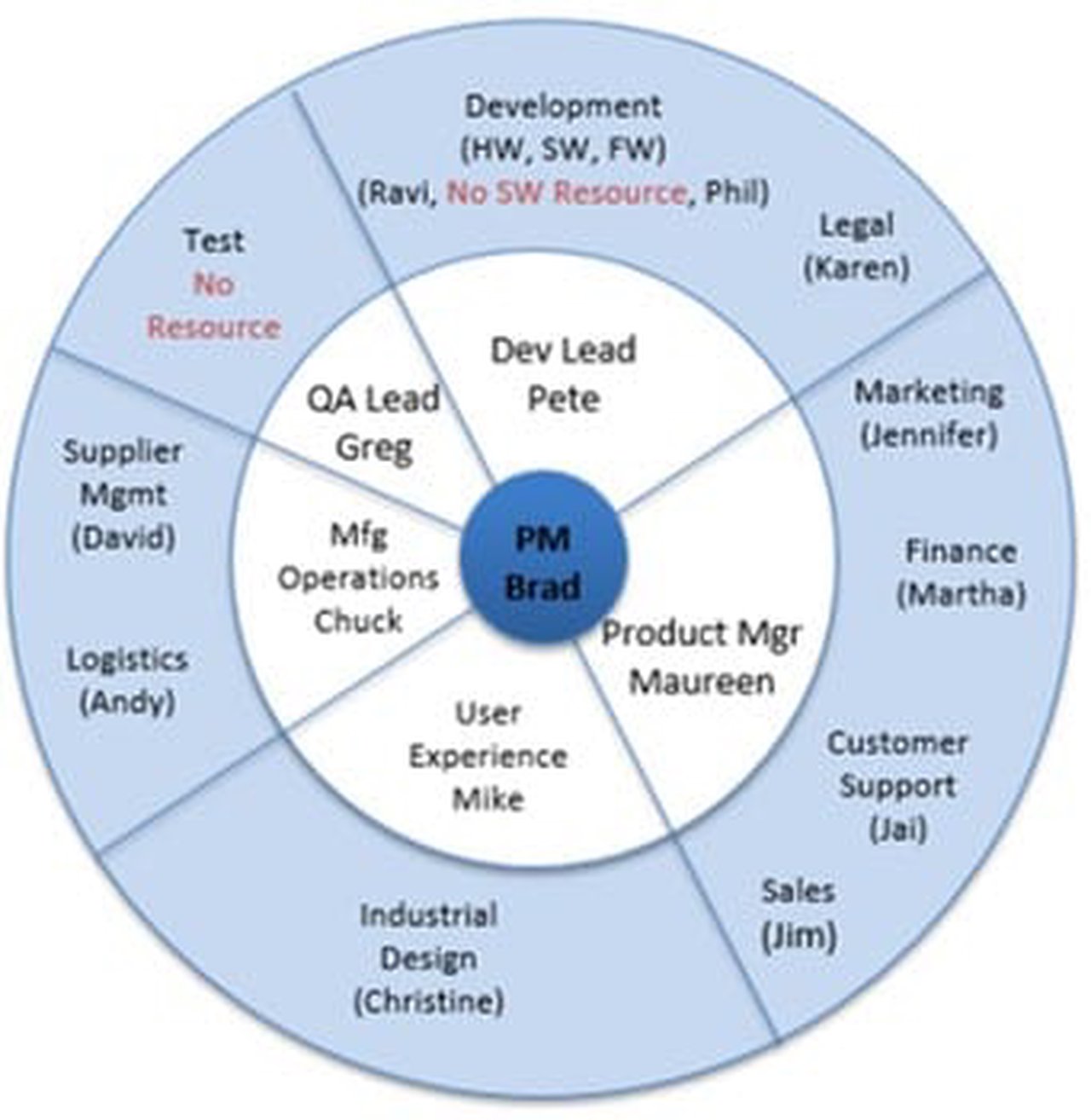Visualizing the Resource Gaps in Product Development Projects
Rarely does a cross functional team start a project with adequate resources to deliver on a predictable schedule. More likely, one of the key risk mitigation efforts is managing the ebb and flow of resource availability as individuals work on different projects at different times. And then, invariably, something falls through the cracks, and throws the project off the rails because you didn’t have the right resources in place. Inadequate staffing or unclear priorities across organizations often leave resource gaps on teams that lead to schedule slips, cost overruns and organizational chaos. Complicated capacity planning tools are often ignored or obsolete. To quickly get a clear picture of staffing gaps, teams can use a simple graphical tool to gain clarity on how & when a team is fully staffed, and provides a mechanism for making better decisions faster.
What is the Team Wheel?
This tool is a PowerPoint slide that identifies, by function, the names of people on the project team. While simplistic, it’s a powerful tool to quickly identify gaps in staffing, and resources that are overextended across multiple projects. The tool is scalable for large or small projects, start-ups or large global corporations. It will provide a consistent analysis tool to manage the risks associated with an understaffed team.
Team Wheel. What are the Benefits?
- Ensures that all stakeholders (internal and external) are accounted for in the delivery of the project.
- Clearly identifies resource gaps on a team.
- Provides the platform for making risk-based staffing decisions
- Minimizes surprises (or project failure) attributed to not having the right resources in place.
What Business Problems Do We Solve with Team Wheel?
It’s not uncommon for projects to start before all the required resources are available. This tool is simple to construct, but provides the platform for making risk based decisions around staffing, and then clearly communicating how the gaps will be mitigated and resolved. It’s an effective communications tool for large companies that have a high number of stakeholders. This graphic can ensure all stakeholders that their interests are being represented on a program, and give the entire team a consistent methodology to see resourcing gaps. It is also extensible for companies that reach outside of the corporate walls to create project teams.
What are some considerations?
While this tool measures the degree to which projects are staffed and quickly identifies resource gaps, it does not evaluate the quality or effectiveness of the resources assigned. Two common examples that drive effectiveness of assigned cross-functional resources are level of skill and resource availability due to conflicting priorities. While these issues can cause tangible impact on a teams ability to deliver, both of these scenarios are issues, and can be managed (and mitigated) by the program manager.
Team Wheel Case Study
A program team in a large consumer products company is tasked with delivery a next generation product to market. The product consists of hardware, software, web and mobile components, each with their own project teams. Additionally, the teams are geographically dispersed across 3 continents. And “uber” program team is formed to serve as the program leadership and is the direct interface between the executive management team and the four project teams. As part of the program kick-off, the program manager constructs a team wheel to identify resources available for this project, and gaps that need to be managed. Also included are third party resources that have critical deliverables to the project.
To construct the team wheel, the program manager does the following:
- Identify Uber Program Team members (typically in addition to the program manager are: 1) product manager, 2) development lead, and QA lead), but can also include a design/UI lead and/or operations lead.
- Identify both internal and external team members that are required to support the delivery of the product to market.
- Populate the wheel, by name, of each team member.
- Where there are cross-functional areas that cannot/will not assigned resources, leave the segment of the wheel blank, to highlight the gap.
- Communicate results, impact and recommended mitigation plan both horizontally and vertically within the organization.
Team Wheel Visualization
Download a template for a Project Team Wheel.

